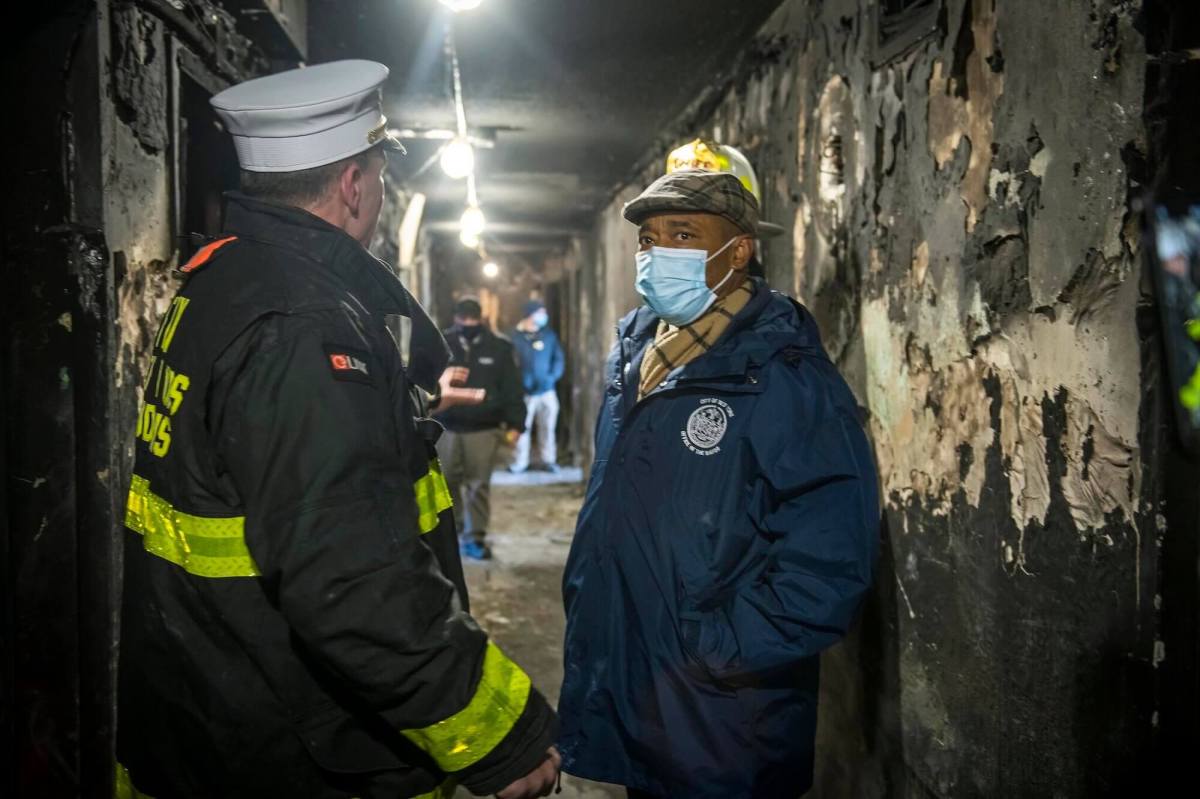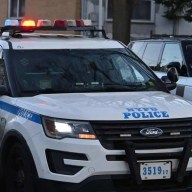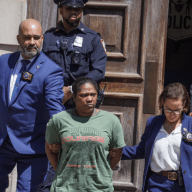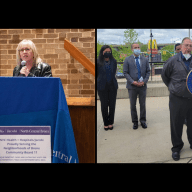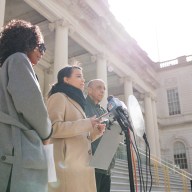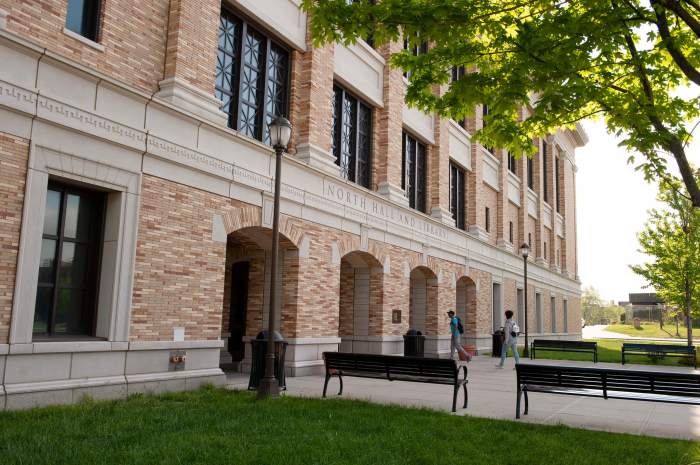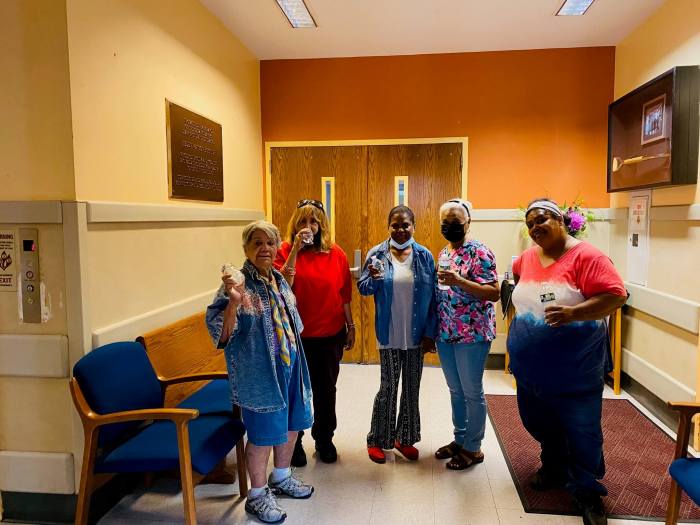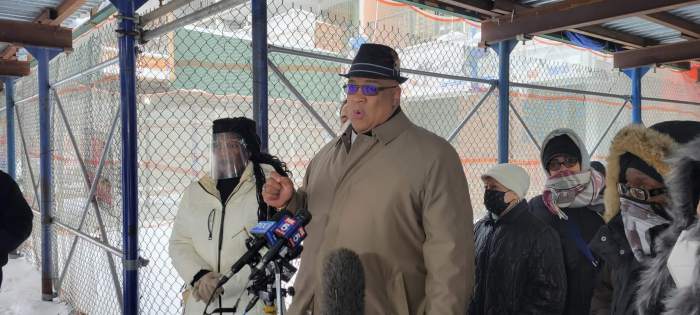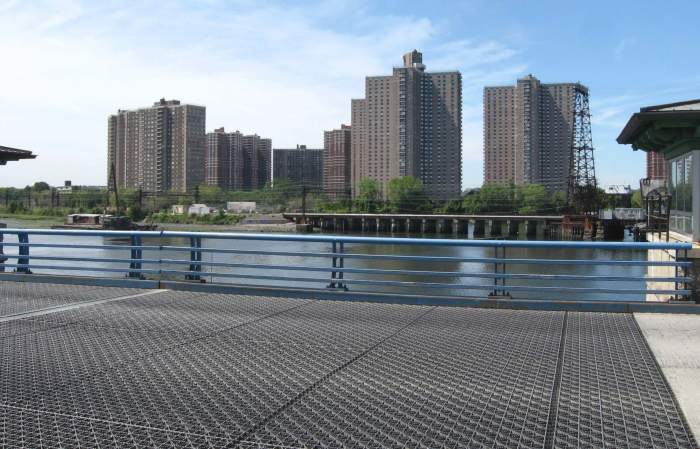This article was updated on Tuesday, Jan. 10 at 5:13 p.m. to include a comment from the Department of Housing Preservation and Development.
Enduring the city’s chilliest portion of the winter season involves a great deal of ingenuity and irritation for Bronxites battling heat season — a period of time from Oct. 1 through May 31.
Diego and Navidad Peralta, who live in Mott Haven, say they resort to leaving their oven on in intervals of 5-6 minutes. Katia Douglas, a Wakefield resident, says she’ll often double up in clothing, as a broken, unrepaired window turns her apartment into an urban tundra.
A year after the deadly Twin Parks fire shined a light on the need for heightened fire safety and enforcement of heat complaints in NYC housing, an NYC Comptroller’s report has found little progress for apartment dwellers.
“I’ve written to 311 almost every week, cause this Christmas was a nightmare,” says Douglas. “They’ll tell me what I need to tell my landlord, and then he doesn’t do it … so you just get used to it.”
According to city Comptroller Brad Lander’s report, a slew of NYC buildings have gone without consistent heat for nearly five years, and the city has failed to enforce action in a quarter of those complaints.
The report identified 1,077 buildings where tenants made more than five heat complaints every winter from 2017 through 2021. In that same time frame, the city’s Department of Housing Preservation and Development (HPD) issued just 21,610 violations to landlords who failed to maintain the minimum-required temperature.
Lack of heat in buildings isn’t a struggle shared by all, however, as a major concentration of 311 complaints are in Black- and brown-majority housing clusters in the Northwest and South Bronx, as well as Washington Heights, Inwood and Harlem.
The five community districts with the highest volume of 311 complaints related to a lack of heat are 93% people of color on average. Two of the city’s community districts with the highest 311 complaints related to insufficient or inconsistent heat belong to Bronx Community District 7 (103 complaints) and Community District 4 (86), which include Fordham and the Concourse sections, respectively.
The five districts — which also includes Bronx Community District 5, where the Twin Parks North West complex sits — with the most violations issued average 89% people of color.
While sanctions from city enforcement includes issuing violations, litigation and emergency repairs for unaddressed heat complaints, the report says the city too often fails to apply them.
“This issue goes unpunished due to inadequate near-time enforcement, and as such, landlords often prefer to pay the occasional fine rather than provide proper heat,” said state Sen. Robert Jackson. “Some landlords use third-party software providers to alert them once a 311 complaint has been made and “adjust” the heat before HPD arrival. As a result, tenants suffer, become ill, and medical conditions are exacerbated. The current system is rigged against tenants, and while the city has strong laws in place, it is important it follows through with strategic enforcement to ensure that everyone has access to safe and dignified living conditions.”
Of the 1,077 buildings with the most persistent heat issues, more than one quarter (274 buildings) saw no enforcement action of any kind from HPD. Overall, tenants living in 70,766 privately-owned residential buildings made a total of 814,542 heat complaints between 2017 and 2021.
“The Comptroller’s report demonstrates that our protocols and practices for enforcing the City’s heat laws are improving landlord behavior and protecting tenants’ health and safety. Simply put: heat complaints decrease in buildings where HPD intervenes, as the report finds,” said William Fowler, HPD spokesperson said on Tuesday. “We always respond to complaints and take the appropriate action when unsafe conditions are discovered. We are reviewing all of the findings and will assess the feasibility of the report’s recommendations on code enforcement.”
Heat season arrives in NYC: Here’s what you can do if you lose heating or hot water
The Heat Sensor Program
In 2020, the City Council established the Heat Sensor Program, which led to the largest decline in heat-related complaints in the years after heat sensors were installed, according to the comptroller’s report.
Every two years, 50 buildings are selected and property owners are required to install heat sensors — internet-capable temperature recording devices — into one heat sensor in the living room of each unit. Residents are given the opportunity to opt out for heat sensor installation in their units.
In total, the Bronx currently has 39 buildings, comprising 1171 apartment units in the program, and the comptroller’s office is recommending that program be expanded to cover all buildings with persistent heat complaints.
However, 10 of the 18 Bronx buildings selected for the program in 2020, failed to install the heat sensors required by the law.
The comptroller’s office noted that the program’s success relies on the city to ensure building owners and landlords to educate tenants on the technology, and escalate actions against landlords who fail to install equipment.
A bill sponsored by Kingsbridge Councilmember Pierina Sanchez aims to expand the scope of the program from 50 select buildings to 150 selected buildings per borough.
The bill would also prompt HPD to conduct heat inspections of these buildings at least once every two weeks, and tenants would be able to opt in to providing automatic heat data transmission to HPD.
“As the report demonstrates, the vast majority of New Yorkers facing abysmal housing quality conditions are low-income, people of color, like my constituents,” said Sanchez, who also chairs of the council’s Housing and Buildings Committee. “Putting housing quality in the cross hairs is a matter of racial justice.”
Reach Robbie Sequeira at rsequeira@schnepsmedia.com or (718) 260-4599. For more coverage, follow us on Twitter, Facebook and Instagram @bronxtimes

